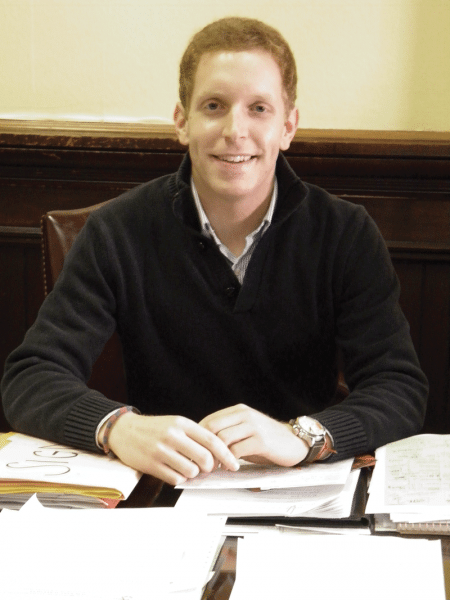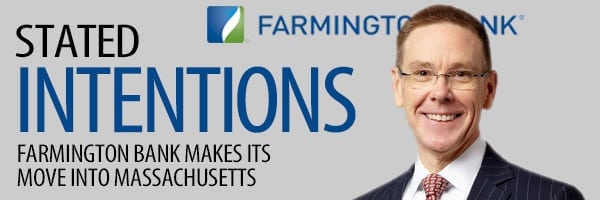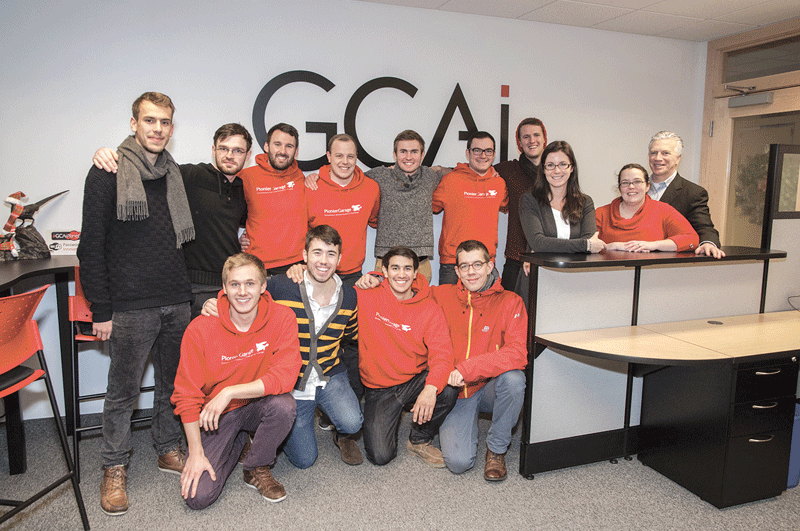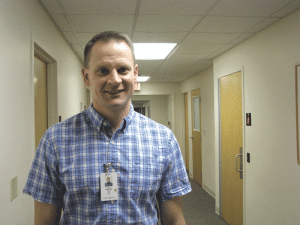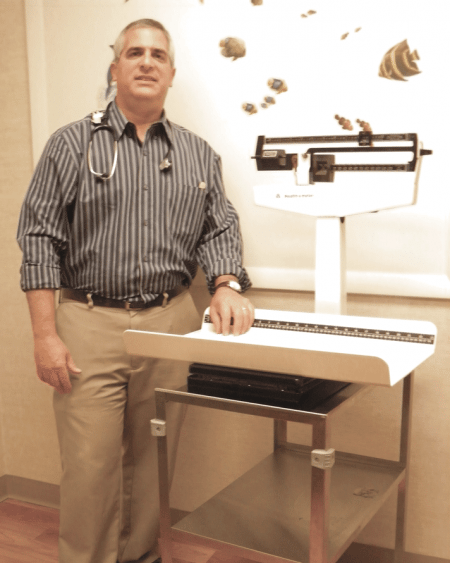Paragus Founder Reflects on Life in the Very Fast Lane
 You know you’re getting somewhere in life when your first name is all anyone really needs to make an identification.
You know you’re getting somewhere in life when your first name is all anyone really needs to make an identification.
That was the case with people named Elvis, Ringo, and Tiger (OK, his real name is Eldrick). And, to a lesser extent, it’s working for the 29-year-old that BusinessWest has chosen to be its Top Entrepreneur for 2014 — Delcie Bean.
Or just ‘Delcie,’ because that’s all that’s generally required when he becomes the subject of conversation. That’s true in part because, well, let’s face it, there are not many Delcies out there. But it’s also because Bean, in just a few years, has become a dominant force in the business community — and also with regional initiatives in the broad realm of economic development, education, and even office design.
By now, most everyone knows the story of how he first started selling things, like Creepy Crawlers and Ozark Lollipops, to classmates in the second grade, and started his own computer-repair company at age 14, when he was too young to drive but had no shortage of clients willing to pick him up and drive him to their home or business.
Most also know that he shaped what was named Valley Computer Works and later renamed Paragus Strategic IT (after asparagus — well, sort of) into one of the fastest-growing IT firms in the country, a fixture on Inc. magazine’s lists of the nation’s fastest-growing private companies, now boasting $4.25 million in annual sales.
They also know that he was the driving force behind Tech Foundry, a nonprofit, launched last year and still in the midst of a one-year pilot program, with the goal of training unemployed and high-school-age individuals and matching them with the precise needs of area companies. It’s an undertaking that’s drawn the praise of local and state officials alike for addressing one of the business community’s most perplexing, and persistent, problems — the dreaded skills gap.
Some might also know that Bean is a principal with a second business venture. Called Waterdog, it’s what he called a “tech-distribution company,” which partners with companies that make technology products and helps them find markets for those products. The enterprise, based in downtown Springfield, is closing on a $500,000 angel-investment round involving the Springfield Venture Fund and River Valley Investors, and is expected to add another 10 employees over the next year.
But less is known about what drives Bean and fuels his many passions. During a wide-ranging, quite enlightening interview, it became abundantly clear that Bean is very serious about:
• Entrepreneurship and fostering more of it;
• Careful and precise allocation of what has become a precious commodity — his time;
• A business philosophy that goes way, way beyond simply making money;
• Work-life balance;
• Getting unplugged much more than most could imagine given his success, his line of work, and the age we live in; and
• Playing a very significant role in the revitalization of Springfield and this region as a whole.
In short, his answers to BusinessWest’s many questions were quite revealing, and what emerged from this Q&A was a sentiment that Bean wants to be, and in many respects already is, a leader on several fronts, but especially when it comes to the growth and maturation of this region as a center for innovation, entrepreneurship, and jobs, something it was a century or more ago — and that he believes it can and will be again.
“If I can serve any benefit to inspiring others to get stuff done and to get motivated, then to me, that’s what’s ultimately worth it,” he said. “We have to continue to prove to people that you can do stuff, and that these things are possible. And I think the more people that have that positive spirit and get in the right perspective … that’s what’s going to change the Valley and bring us back to the glory days. Springfield was one of the biggest cities in the Northeast at one point, and there’s no reason why we can’t return to those days, just in a different way.”
In Good Company
As he settled back into one of the comfortable chairs in the conference room at Paragus’ recently opened, ‘outrageous green’-dominated headquarters in Hadley, Bean started the conversation by relating an exercise he recently undertook with some colleagues.
“We started talking about all the things that happened just in 2014,” he explained. “Within about 12 hours, I’d thrown up this website called springfield99.com where we started listing all the things that happened just in Springfield and just in 2014. And it’s amazing just how many things happened in this one year alone, some of which I was part of, some of which I would have loved to have been part of, but all of which I’m just proud to say are going on in the Valley.”

Delcie Bean says that a vibrant Springfield “is something I really want to play a role in.”
When asked for a list, he mentioned everything from the formal launching of Tech Foundry to the success enjoyed by Valley Venture Mentors; from TechSpring, the initiative launched by Baystate Health to foster entrepreneurship within the healthcare spectrum to the innovation center being built downtown; from Barbara Walters speaking at Bay Path University’s annual leadership conference to an American Pickers episode taped in the city that involved old Indian motorcycles.
“We got to item 45, and then we remembered that MGM got approval to open a casino,” he went on. “It was so cool to see that there was so much going on that isn’t necessarily in the shadow of the casino; it’s not a footnote to the casino — the casino is just part of this movement that’s going on.”
Before elaborating on the many aspects of that movement, BusinessWest first asked Bean about his various business ventures and what’s likely to happen next.
We started with Paragus, the IT-solutions company that now boasts more than 40 employees. The coming year shapes up to be an intriguing one, with Bean initiating an employee stock-ownership program (ESOP), and the Paragus team eyeing a host of avenues for expansion — in a variety of forms.
BusinessWest: Talk about the ESOP. It’s a big step, and there are risks involved. Why take this step now, and what does it mean for Paragus for the short and long term?
Bean: “In a lot of ways, this transition to an ESOP is a gamble on my part. I’m betting that the company will grow even faster and net even bigger returns in the hands of the employees than it would have if I had continued to remain as 100% owner.
“The employees will own 51% of the company, and I’ll own 49%, and the hope is that, by being owners and thinking and behaving differently, they will drive better results. It has to not only happen, but it has to happen at a multiple big enough to offset the growth I would have gained on my own if I had retained 100% of the shares.”
BusinessWest: How are you preparing your employees for what will be a dramatic shift in their role — and also in their outlook about the company and where it can go?
Bean: “We’ve spent that past 18 months preparing employees for that transition, because it is a big change. I led a class recently called ‘What Does it Mean to be an Owner?’ and we went through the process together of defining what are the characteristics of a truly great owner. I then challenged them to identify one characteristic that they had room to improve upon, and work with me one on one to develop an action plan for how they could make progress on improving on that characteristic.”
BusinessWest: Talk about your own role moving forward. Will it change, and if so, how?
Bean: “One of my goals and objectives is to create businesses that are not dependent upon me. Another way that I define success is getting people to be self-reliant, or empowered, or in a position where they’re not dependent on me. Every day, Paragus is less and less dependent on me personally, and that’s a huge mark of success.
“It means that we have a strong leadership team, it means that we have empowered employees, it means that we have good systems and processes. It means we have a healthy business. It’s great seeding companies and getting them started, but then empowering and finding just the right people, the right mix, and the right plan so they can grow and thrive and succeed on their own.”
BusinessWest: What is your long-term vision for the company, and how does the ESOP affect that? Is this a company that you envision someday being sold to a much larger entity?
Bean: “I decided a few years ago that Paragus was never going to be that company — it was never going to be the company that we grew to sell externally, and the ESOP is putting a nail in that coffin. By making an ESOP, we’re very publically saying, ‘this is a company that’s going to remain here in the Valley, owned by the Valley, and here to support and contribute to the Valley.’
“But that doesn’t mean that they don’t have big, aspirational goals. They want to look at some acquisitions, they want to open up some other offices, they want to expand into some other markets. They want to make this company big, and they want to be the ones who own it and do it. We don’t want to grow it to sell it.”
BusinessWest: Can Paragus meet all those lofty goals you mentioned by remaining a Western Mass. company, or just a Western Mass. company? There are some competitive disadvantages to being in this region, and it can’t be easy to recruit top talent to this region. Will Paragus still be a fixture here in five, 10, or 20 years?
Bean: “I think Paragus can always be here and will always be here. But if Paragus wants to continue to grow at 30% a year, as it has for the past five years, at some point, and probably not too far from now, they’re going to have to expand their market, and that might mean opening up a Paragus in another market. But that won’t mean leaving Western Mass.
“I can’t imagine a future where Paragus abandons Western Mass., but I can imagine a future in which we have a branch anywhere from Denver, Colorado to Hartford, Connecticut. In fact, there has been a lot of talk, probably just because people love the area, about Denver — it’s a really cool city going through some exciting times, and a place where the Paragus team members can see themselves having a lot of fun. There’s been nothing serious, but there has been some talk about how maybe, someday, that would be a cool place to put some new roots.”

Bean says the employee stock-ownership program he’s initiating should enable the company to grow even faster and net bigger returns than if he remained sole owner.
The Future Is Now
BusinessWest: Let’s switch gears and talk about your participation in economic-development-related initiatives and your thoughts on Springfield and the region as a whole. If we were doing this interview 10 or 15 or 20 years from now, what would you like to have said you’d accomplished beyond success with your businesses?
Bean: “Right now, I have become so excited about the prospect of a revitalized, rejuvenated Springfield that I’d like to be able to say that, not only has Springfield accomplished that, but some actions that I took part in contributed.
“What that looks like is so hard to define, but I think it’s one of those things where you know it when you see it, whether it’s the energy or the excitement or the pure quantity of people on the street. But a vibrant Springfield is something I really want to play a role in.”
BusinessWest: You sound quite upbeat about the Valley’s prospects. What is the basis of that optimism?
Bean: “Things are coming together in many ways, especially in Springfield. Through Valley Venture Mentors, the innovation center, the accelerator program, and other initiatives, we’re creating entrepreneurial energy, and the possibilities are very exciting.”
BusinessWest: Beyond Tech Foundry and its mission of helping to create a large, talented workforce, what are some of the other ways you’ve become involved in economic-development efforts?
Bean: “I sit on two EDC [Economic Development Council of Western Mass.] boards, the Entrepre-neurship Committee and the Homefield Advantage Committee, and I really enjoy that work. I also get involved in other ways, such as mentoring entrepreneurs.”
BusinessWest: Mentoring entrepreneurs? Do you do a lot of that?
Bean: “I do, either through a program like Valley Venture Mentors or separately on the side. I also take phone calls … I don’t know how I got signed up for this, but people will come to me and say, ‘hey, I’m thinking of moving to the Springfield area, and someone gave me your name as somebody I should talk to before I move there.’ I’ll give them an idea about jobs and positions and what I think the economic landscape looks like and how awesome and exciting it is to be here right now. Maybe once a week I’ll get a call like that, and it’s great to know that, once a week, someone’s thinking about moving back here.”
BusinessWest: Many economic-development leaders are bullish about improved rail service between Vermont and Southern Connecticut. Do you believe such service can change the equation in this region, and if so, how?
Bean: “The Tofu Curtain drives me crazy, and I’m hopeful that maybe Northampton, Holyoke, and Springfield start working better together. Maybe the ease of getting from one place to another because we don’t have to deal with the car … maybe it makes the communities more connected and work more synergistically.
“That’s my most aspirational hope for this train; we call it ‘the Valley,’ but it’s really two very distinct sections, and you could argue there’s three because of Franklin County. Look at Holyoke and Springfield — it is amazing how little those two cities work together, and they’re so much alike; they’re both Gateway cities within a stone’s throw of each other with similar problems and similar challenges, and they’re not working collaboratively as they should be, and I’m hoping one stop on the rail line changes all that.
“I’d love to see the Valley function as one neighborhood, and if you look at Silicon Valley and so many other parts of the country, they’re the same size as our valley, but we’re so much more insular. And people complain that it takes 20 minutes to get from Northampton to Springfield. Look at Boston — it takes 20 minutes to get anywhere, and they’re doing just fine.
“That’s my hope, that maybe this rail service gives us one less excuse to not do business with each other, or have lunch together, or have meetings together and not fight about whether it’s in Northampton or Springfield.”
BusinessWest: What about the casino? This is not exactly innovation, but it is economic development and jobs. Will this be a positive force in the city and the region?
Bean: “I have very positive feelings about the casino’s impact and what it’s going to do for the city, but I think’s it’s important that it doesn’t define us — and it doesn’t sound like it is. It sounds like we’re defining ourselves.”
Time and Space
BusinessWest: Considering the many types of demands on your time, you have probably become adept at how that resource is allocated. Talk about how you distribute the hours in your day and find time for everything you want to do.
Bean: “It’s definitely challenging. There are a lot of things competing for my time, and I’m one of those people who has a hard time saying no to things I’m passionate about or that I think are good and worthy. But there are plenty of things I do say no to; for example, I’m not an advocate for long meetings where there’s no clear purpose and the dialogue isn’t going to result in any clear action items. I’ve been to more than a few of those, and I’ve learned my lesson; those meetings do have a purpose, just not a purpose that I’m able to contribute much to, so I’ve learned that they’re not a good investment of my time.”
BusinessWest: Talk about those occasions, and those causes, for which saying ‘no’ is not an option.
Bean: “There are three different buckets that I put my time into right now, and maybe one sub-bucket. For starters, there’s Paragus and Waterdog; I work from 6:30 a.m. to 6:30 p.m. most days, and in that 12-hour span, Paragus gets six of those hours, and Waterdog probably gets two of those hours. But what’s nice is that still leaves me with four hours a day, and that’s where I would put my outside interests or economic-development interests, or giving back, or however you want to classify that.
“A big piece of that goes to Tech Foundry, but that still leaves plenty left over to be a speaker at various events, to attend different meetings, to mentor entrepreneurs, to go to city planning meetings, and a lot of other things.”
BusinessWest: Time management is a critical assignment for all business leaders. Talk some more about your approach to it and how you get the most out of each hour in the day.
Bean: “I have a very, very full calendar — every minute is booked between 6:30 a.m. and 6:30 p.m., and two nights a week I work late, and that usually means I have some event I need to attend. That’s where I’m really selective; there are so many great events in the Valley to go to at night, and I only pick two a week. And if I’m going to do a late night, I’ll try to do two or three things that night.
“I live an hour and 15 minutes away in New Hampshire, and a few years ago I hired a driver, so I use my commute time to do all my e-mail so that during the day I don’t even look at my computer — I just go from meeting to meeting as my phone instructs me to, and then I have two hours at the beginning and end of each day to catch up on e-mails, get proposals, or correspond with people.
“Hiring a driver was an economic decision. I ran the math and looked at how productive I could be with an extra two hours a day and what it cost to pay someone for those four hours, and decided it made perfect sense. This gives me a guaranteed two or two and a half hours a day when no one can walk into my office, call me on the phone … it’s just a guaranteed two hours of e-mail and going over proposals.”
Investments in the Valley
BusinessWest: You must get a lot of requests to serve on boards and take part in economic-development-related initiatives. How do you decide where to put your time and energy?
Bean: “We get a lot of those requests, and they all go to Margie, my assistant. She’s gotten to know really well what I’m passionate about, what I’m interested in, and what I’m not, so she will vet them, send me to ones that she thinks are worth me at least looking at, and then I’ll figure out what the commitment is going to be.
“For example, I’ve been very good about not getting on the boards of nonprofits, only because there are so many of them, it would be hard to choose, and I have my own nonprofits for which I’m president of the board, and I don’t want to distract from those energies. But there was an opportunity that came along where an organization is going to be forming a charter school in Springfield, and that organization, Up Academy, has a track record that’s just mind-blowing. It will take over an existing Springfield middle school, serve the same students and use the same money, but run it privately.
“I started hearing about that, and I started researching the track record and learning more about that organization, including the work they did in Lawrence, the work they did in Boston. It was so impressive that I did agree to join their founding board because I feel that education in Springfield has got to be a priority, and what it needs right now are some new, fresh perspectives, some new minds, and some new thoughts. So this was one where I broke my own rule and got involved.”
BusinessWest: You also get a number of requests to speak to different groups and offer keynote addresses at events. First, do you like public speaking — is it something you’ve become good at? And, second, how do you decide which speaking requests to accept?
Bean: “Speaking is always something I’ve enjoyed, and it’s always something I thought came naturally to me. I don’t know; I’ve never sat in the audience, so I don’t know how I come off. But it’s never something that’s made me nervous or uncomfortable.
“And what I really like about public speaking is having the opportunity to use that platform to energize an entire group of people at one time around a thought, an idea, an interest, an excitement level, and really get people to leave that room thinking differently and feeling differently. If I accomplished that, then I’m thrilled.”
BusinessWest: What have been some of your recent assignments, and did you feel you’ve been able to energize the room, as you mentioned?
Bean: “One of the most exciting ones I got to do recently was the Grinspoon Foundation entrepreneurship dinner, where they asked me to be the keynote speaker. What I liked about it was that here were 300 to 400 college kids who had a demonstrated interest in entrepreneurship, and were asking themselves those questions in their heads: ‘can I do this? Is this right for me? How would I even get started? Am I really cut out for this?’ And being able to share my story with those kids and talk to them about my experiences and my perspective on the situation and give them the confidence and encouragement to go off and do it … I certainly left that night feeling energized and excited.
“At least when compared to when I spoke at the Massachusetts Developers Conference. That was certainly fun and exciting, but I don’t think I changed a lot of hearts and minds that day. It will be the same when I speak at a Federal Reserve Bank event in Boston in January. That will certainly be fun, and it will be a great audience, but I don’t think I’ll change a lot of hearts and minds. Hopefully I will, because that’s when I really enjoy it — when I get a bunch of people really excited.”
Managing Expectations
BusinessWest: Let’s talk about your management style, your thoughts on running a business, and your opinions on what makes a true business leader. And maybe the logical place to start is by asking if you’ve had any mentors or any business owners you’ve borrowed from or tried to emulate.
Bean: “I personally like to draw on the best of everybody, so I have a handful of mentors, and there are things about them that I emulate and maybe things about them I’m not so keen on. I try to pull the best characteristics from everyone I know. But if there was one person I had to point to … I really like what [Zappos founder] Tony Hsieh has done, not just with that company, but his philosophy, his mindset, his personality.
“He’s someone who’s really gotten the economic-development bug and is trying to rebuild the entire city of Las Vegas, which was worse off than the city of Springfield was, and turn it into a vibrant, functioning city again. And that’s inspirational, because it’s rare that somebody with that much money, where there’s so little that he’s going to gain from this personally, is so passionate about a city and its revitalization. To see him dedicate his time and energy to that project definitely gives me encouragement to know that’s there’s nothing wrong with not spending all of your time trying to make money.”
BusinessWest: Can you elaborate on that thought, because making money is what has driven most entrepreneurs throughout history.
Bean: “There are some people who go from one enterprise to the next one to the next one, and it’s always about ‘how big can I make the coffers?’ There’s nothing wrong with that — that’s capitalism — but there’s a lot of room for also making sure you understand what makes you happy, what you enjoy, and for me, that’s seeing things happen. And if I can make things happen, even if those things don’t directly correlate back to some financial interest of mine, I get joy from the act of seeing them happen.
“Seeing Tech Foundry launch … maybe it helps Paragus someday with workforce — maybe. But there are many things I could do that are a lot less expensive and a lot less time-consuming, but seeing it happen, seeing those kids show up, seeing the impact on the community, that, to me, totally justifies the time, the money, and everything else.”
BusinessWest: Who else inspires you, enough for you to want to emulate them?
Bean: “There are so many people, it’s hard to narrow it down. I’m certainly inspired by (long pause) even Bill Gates to a certain extent. It’s a tough one — he’s very controversial; there are a lot of things you can say about him. But I’ll say I’m inspired by the fact that, despite all the money he’s made, he’s dedicated so much of his time to giving it away — but not just by writing big, fat checks.
“He’s trying to figure out how to make a meaningful impact on the world, whether it’s through the malaria work they’re doing or … he’s got a project where he’s trying to use spent nuclear rods to create clean electricity. It’s so much easier for him to write a check, but for him, as it is for me — not that I’m comparing myself to Bill Gates — he’s taking his time, his energy, and his passion and using it for more than creating wealth for himself.”
BusinessWest: Anyone in this region who has been a mentor or a source of inspiration?
Bean: “There have been many. The Davis Brothers [John and Steve, former third-generation owners of American Saw, now Lenox] are a good example. Those are guys who don’t have to be here; they can be doing a lot of other things, but they’ve chosen to spend their time, money, and energy impacting the community that they’re in, and in ways that are really inspirational.
“They could be doing financial investing in areas that are probably going to net them better returns, but they’re committed to everything from for-profit investment to not-for-profit investment, but also giving their time. The fact that Steve Davis is chair of the Entrepreneurship Committee, and John Davis has his Springfield Business Leaders for Education, another group I decided to join, shows they’re dedicating more than their time; they’re here every day, they’re giving their money, their effort, and they don’t have to be. And that’s inspiring. Watching them almost makes me feel obligated; if they’re doing it, how could I not do it?”
BusinessWest: You’re 29 years old, but you’ve been the boss your entire life. Most people have the opportunity to learn and grow by watching and drawing out those on the higher rungs on the ladder. You’ve never really had that opportunity; do you feel that maybe you missed out on some learning opportunities?
Bean: “That’s a good question. ‘No’ is the short answer. I had never been taught that who you learn from are the people above you in your own organization, because I’d never been in an organization big enough to do that. I was naive in the sense that I didn’t know that’s how it’s supposed to work.
“So I learned from everybody. I learned from my clients, from my vendors, from my banker, my lawyer, my accountant — I wouldn’t just let them do stuff for me, I’d make them explain it to me; I’d look over my accountant’s shoulder while he’s doing my tax returns and my books, asking him mind-numbingly boring questions, because I really wanted to know, and I needed to see the big picture.
“I learn from my staff, I learn from community leaders, and I read a lot. I’ve learned a lot from the books I’ve read; I can’t understate the amount of knowledge I’ve accumulated from reading some phenomenal business books.”
Hanging in the Balance
BusinessWest: We’ve talked about business, economic development, mentoring, community service … what do you do when you’re not doing any of that?
Bean: “When I’m really not working, I love just being with my family. We moved to New Hampshire because I love the outdoors and I love being in a rural environment. I’ve got two young kids — a 3-year-old and an 18-month-old — and I love just being out with my wife and kids.
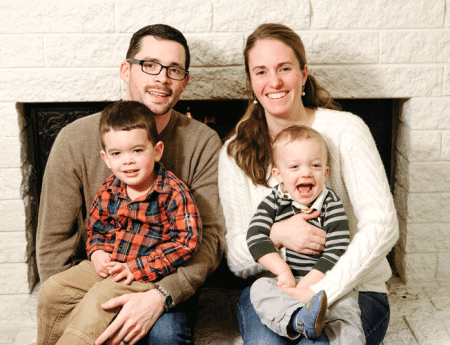
Delcie Bean, seen here with his wife, Julia, and sons Delcie Bean V (Jack), left, and James, says he values work-life balance and has a strict no-work policy on weekends.
“We live on 16 acres that abut 16,000 acres of state land, and so we just love going on hikes in the woods — endless trails where you can never walk the same path twice. I love that stuff. I love just being at home with my family, just taking it really easy and relaxed.
“One of the reasons I moved up there is I spend so much time around people all day long, so it’s really nice being up somewhere where the only thing you can hear are the birds and the trees; it’s so quiet and peaceful up there.”
BusinessWest: Can you really just put aside the various kinds of work you have like that?
Bean: “I don’t really have much choice. It’s also very unplugged up there — we barely have Internet; I have a crappy DSL connection. Even if I wanted to work. it would be miserable.”
BusinessWest: Somehow, you don’t seem like the type who could be unplugged for very long.
Bean: “You’d be surprised. I work almost a 12-hour day, but then when I do get home, especially on the weekends, I have a very strict no-work policy. That time is for me and for my family. It takes a lot of energy to do what I do, and I need to kind of recharge and regroup, and part of that is being unplugged and not being ‘on.’
“When my wife and I go on vacation, we go to these really, really secluded destinations where we don’t do anything — we’re just vegetables where we just spend time with each other and there’s no other people.”
BusinessWest: Where do you go?
Bean: “My favorite place … there’s this villa in Jamaica on the other side of the island from where everyone else goes, in a tiny little fishing village. We rent it out, and the only people there are a cook, a maid, and a pool guy; those are the only three people you see the entire time you’re there. They make all your meals for you, and you live in this beautiful house with your own private beach and your own swimming pool. You can completely just unplug and relax; there’s no Internet, no TV. I just read and read and read, and enjoy disconnecting.”
BusinessWest: Where else do you go?
Bean: “I make a clear distinction between vacationing and traveling. We try to commit to a system where every other trip we travel — we’ll go to some city and walk around, like we just got back from Quebec City this past summer — and the alternating trip is what I call vacationing, where we don’t do anything.”
BusinessWest: Do you think you have a proper balance between life and work?
Bean: “I do, and that’s because I work hard at it. I decided to hire a driver around the time I had my first kid. It allowed me to get home an hour earlier because I wasn’t staying at work that extra hour doing my e-mail. So, except for those two nights I work late, those other three I make it home in time to put the kids to bed, and that’s important to me.
“And two days a month I go into work late so I can drive my kid to school. I really enjoy it, and it means a lot to him. Finding a balance was tough, and I’m very fortunate that my wife is able to stay home with the kids; that has helped a lot. And my no-work-weekend policy makes a huge difference, because those two days are 100% about being with the kids and the family.
“And that also speaks to my point earlier about how one of my objectives is to create businesses that are not dependent upon me. That gives me the flexibility to go to that Little League game when my kids get a little older, or that school play, and not feel like the whole world revolves around me being at my desk. I don’t want people so dependent on me I’m handcuffed.”
He Gets IT
To say that Bean has been successful in remaining un-handcuffed would be a huge understatement.
By carefully managing time, empowering people, and putting effective systems in place, he’s found the hours, the energy, the will, and the freedom to be a force in the Pioneer Valley on a number of levels.
And at 29, and with a firm commitment to remain at the forefront of efforts to both grow his businesses and be a part of the efforts to revitalize the region economically, he’s certain to be a force for years and decades to come.
Stay tuned.
Previous Top Entrepreneurs
• 2013: Tim Van Epps, president and CEO of Sandri LLC
• 2012: Rick Crews and Jim Brennan, franchisees of Doctors Express
• 2011: Heriberto Flores, director of the New England Farm Workers’ Council and Partners for Community
• 2010: Bob Bolduc, founder and CEO of Pride
• 2009: Holyoke Gas & Electric
• 2008: Arlene Kelly and Kim Sanborn, founders of Human Resource Solutions and Convergent Solutions Inc.
• 2007: John Maybury, president of Maybury Material Handling
• 2006: Rocco, Jim, and Jayson Falcone, principals of Rocky’s Hardware Stores and Falcone Retail Properties
• 2005: James (Jeb) Balise, president of Balise Motor Sales
• 2004: Craig Melin, then-president and CEO of Cooley Dickinson Hospital
• 2003: Tony Dolphin, president of Springboard Technologies
• 2002: Timm Tobin, then-president of Tobin Systems Inc.
• 2001: Dan Kelley, then-president of Equal Access Partners
• 2000: Jim Ross, Doug Brown, and Richard DiGeronimo, then-principals of Concourse Communications
• 1999: Andrew Scibelli, then-president of Springfield Technical Community College
• 1998: Eric Suher, president of E.S. Sports
• 1997: Peter Rosskothen and Larry Perreault, then-co-owners of the Log Cabin Banquet and Meeting House
• 1996: David Epstein, president and co-founder of JavaNet and the JavaNet Café
George O’Brien can be reached at [email protected]
